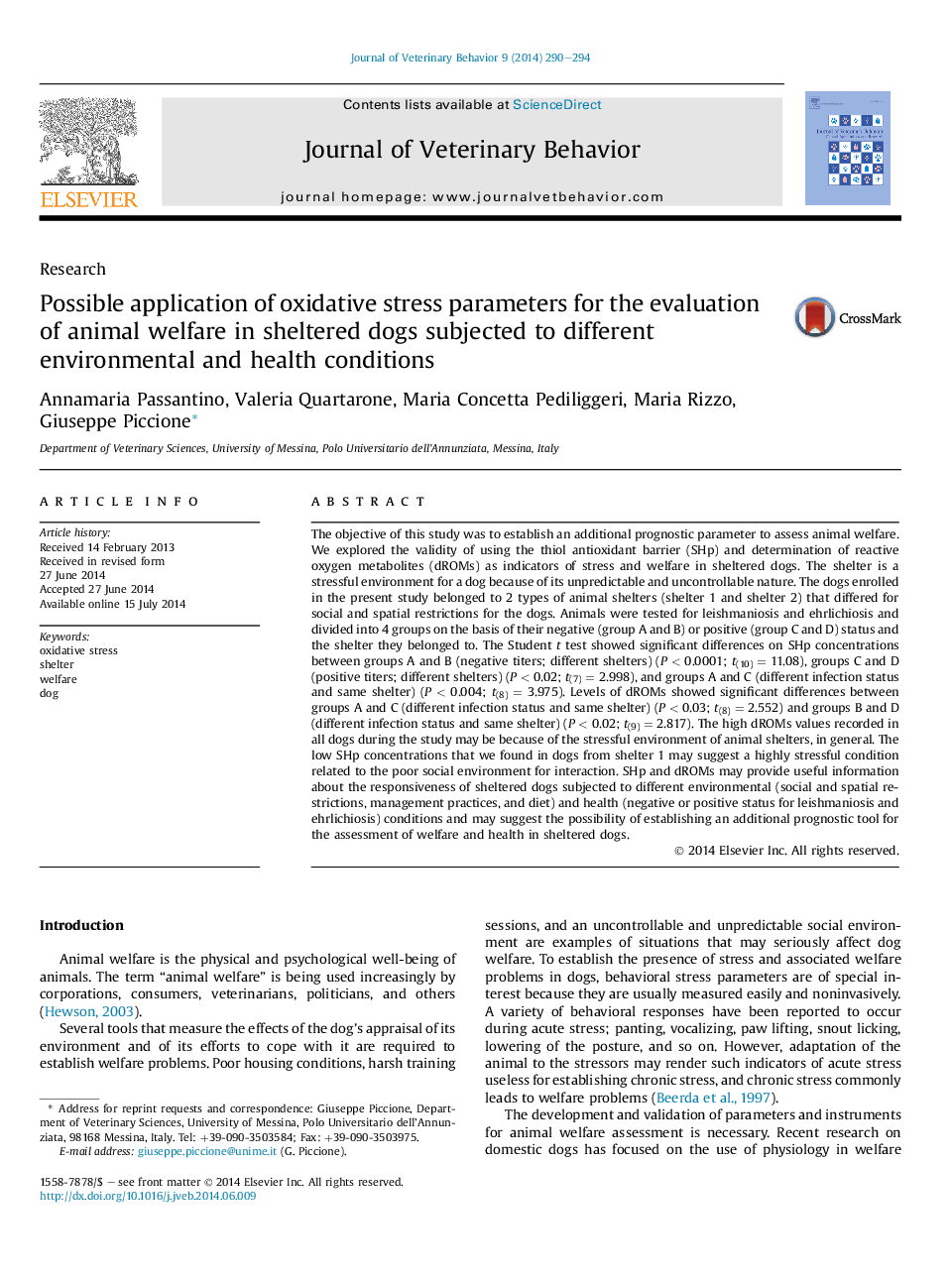| Article ID | Journal | Published Year | Pages | File Type |
|---|---|---|---|---|
| 2398713 | Journal of Veterinary Behavior: Clinical Applications and Research | 2014 | 5 Pages |
The objective of this study was to establish an additional prognostic parameter to assess animal welfare. We explored the validity of using the thiol antioxidant barrier (SHp) and determination of reactive oxygen metabolites (dROMs) as indicators of stress and welfare in sheltered dogs. The shelter is a stressful environment for a dog because of its unpredictable and uncontrollable nature. The dogs enrolled in the present study belonged to 2 types of animal shelters (shelter 1 and shelter 2) that differed for social and spatial restrictions for the dogs. Animals were tested for leishmaniosis and ehrlichiosis and divided into 4 groups on the basis of their negative (group A and B) or positive (group C and D) status and the shelter they belonged to. The Student t test showed significant differences on SHp concentrations between groups A and B (negative titers; different shelters) (P < 0.0001; t(10) = 11.08), groups C and D (positive titers; different shelters) (P < 0.02; t(7) = 2.998), and groups A and C (different infection status and same shelter) (P < 0.004; t(8) = 3.975). Levels of dROMs showed significant differences between groups A and C (different infection status and same shelter) (P < 0.03; t(8) = 2.552) and groups B and D (different infection status and same shelter) (P < 0.02; t(9) = 2.817). The high dROMs values recorded in all dogs during the study may be because of the stressful environment of animal shelters, in general. The low SHp concentrations that we found in dogs from shelter 1 may suggest a highly stressful condition related to the poor social environment for interaction. SHp and dROMs may provide useful information about the responsiveness of sheltered dogs subjected to different environmental (social and spatial restrictions, management practices, and diet) and health (negative or positive status for leishmaniosis and ehrlichiosis) conditions and may suggest the possibility of establishing an additional prognostic tool for the assessment of welfare and health in sheltered dogs.
